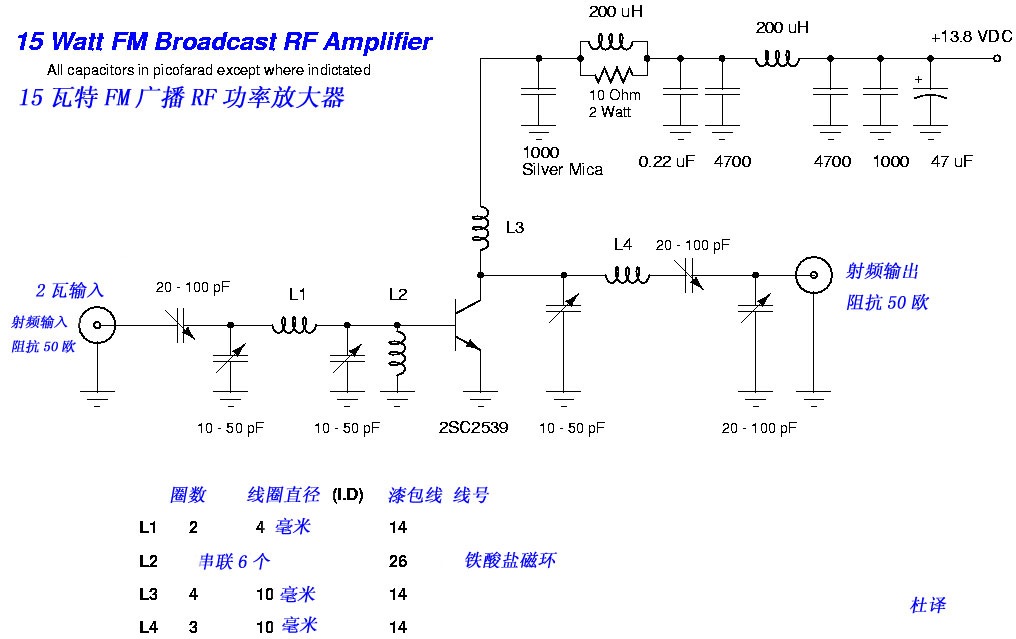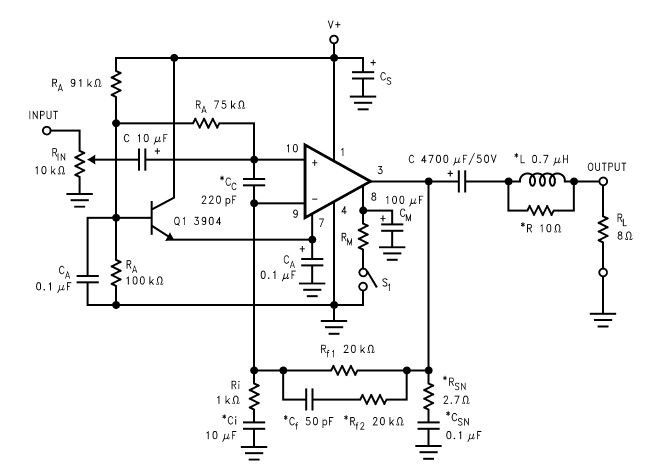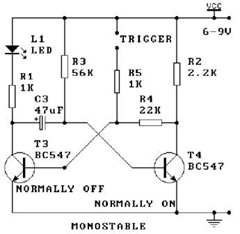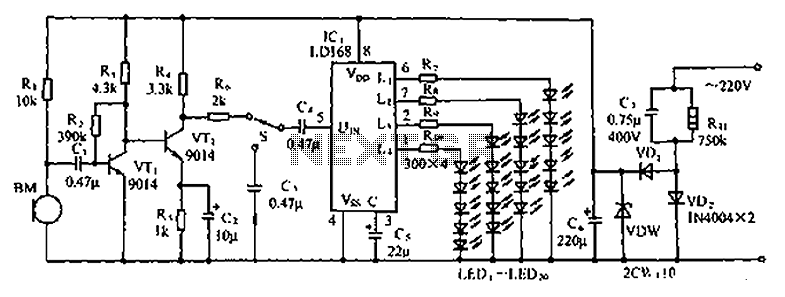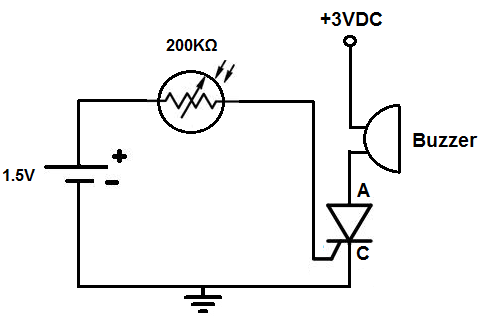
18W Audio Amplifier Circuit
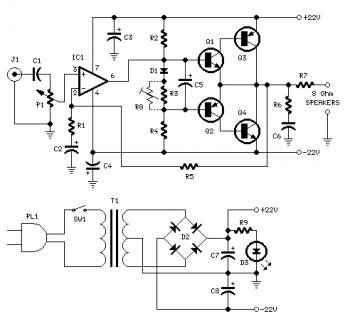
Proper grounding is essential for eliminating hum and ground loops. Connect the ground terminals of J1, P1, C2, C3, and C4 to the same point. Connect C6 to the output ground. An audio amplifier is an electronic device that amplifies low-power audio signals, typically within the frequency range of 20 Hz to 20 kHz, which corresponds to human hearing. This amplification brings the audio signals to a level suitable for driving loudspeakers and represents the final stage in a typical audio playback system. The earlier stages in this chain consist of low-power audio amplifiers that handle functions such as pre-amplification, equalization, tone control, mixing, and effects, as well as audio sources like record players, CD players, and cassette players. Most audio amplifiers require these low-level inputs to conform to line levels. While the input signal to an audio amplifier may be only a few hundred microwatts, the output can reach tens, hundreds, or even thousands of watts. Additional information about power audio amplifiers can be found on Wikipedia. A video tutorial is available on how to build a simple headphone amplifier powered by a 9V battery, utilizing an integrated circuit to amplify the input signal from an MP3 player.
An audio amplifier circuit typically consists of several key components that work together to boost the audio signal. The grounding scheme is crucial; improper grounding can lead to unwanted noise and interference. The ground connections for components such as audio jacks (J1), power connectors (P1), and capacitors (C2, C3, C4) should all converge at a single ground point to ensure a common reference level, thus minimizing the risk of ground loops and hum.
The audio amplifier itself may utilize an integrated circuit (IC) designed specifically for audio applications. This IC can accept low-level audio inputs from various sources, such as MP3 players or other audio devices, and amplify them to a level suitable for loudspeakers. The design should incorporate capacitors like C6 to filter out any noise from the power supply and stabilize the output.
The output stage of the amplifier is critical, as it must be capable of delivering sufficient power to drive speakers effectively. This stage may involve additional components such as transistors or MOSFETs, which can handle high current loads, ensuring that the amplifier can produce output power in the range of watts required for typical loudspeakers.
The power supply for the amplifier, in this case, is a 9V battery, which provides the necessary voltage for the circuit. The choice of power supply affects the overall performance and efficiency of the amplifier. The circuit design should also include appropriate protection mechanisms, such as fuses or thermal shutdown features, to prevent damage during operation.
In summary, a well-designed audio amplifier circuit requires careful attention to grounding, component selection, and power management to achieve optimal performance in amplifying audio signals for playback through loudspeakers.A correct grounding is very important to eliminate hum and ground loops. Connect to the same point the ground sides of J1, P1, C2, C3 & C4. Connect C6 to the output ground. An audio amplifier is an electronic amplifier that amplifies low-power audio signals (signals composed primarily of frequencies between 20 - 20 000 Hz, the human range of heari ng) to a level suitable for driving loudspeakers and is the final stage in a typical audio playback chain. The preceding stages in such a chain are low power audio amplifiers which perform tasks like pre-amplification, equalization, tone control, mixing/effects, or audio sources like record players, CD players, and cassette players.
Most audio amplifiers require these low-level inputs to adhere to line levels. While the input signal to an audio amplifier may measure only a few hundred microwatts, its output may be tens, hundreds, or thousands of watts. More explanation about power audio amplifier can be found at wikipedia. org This is the video tutorial about how to build a realy simple headphone amplifier. The circuit powered with 9V battery and use an IC to amplify the input signal from mp3 player. 🔗 External reference
An audio amplifier circuit typically consists of several key components that work together to boost the audio signal. The grounding scheme is crucial; improper grounding can lead to unwanted noise and interference. The ground connections for components such as audio jacks (J1), power connectors (P1), and capacitors (C2, C3, C4) should all converge at a single ground point to ensure a common reference level, thus minimizing the risk of ground loops and hum.
The audio amplifier itself may utilize an integrated circuit (IC) designed specifically for audio applications. This IC can accept low-level audio inputs from various sources, such as MP3 players or other audio devices, and amplify them to a level suitable for loudspeakers. The design should incorporate capacitors like C6 to filter out any noise from the power supply and stabilize the output.
The output stage of the amplifier is critical, as it must be capable of delivering sufficient power to drive speakers effectively. This stage may involve additional components such as transistors or MOSFETs, which can handle high current loads, ensuring that the amplifier can produce output power in the range of watts required for typical loudspeakers.
The power supply for the amplifier, in this case, is a 9V battery, which provides the necessary voltage for the circuit. The choice of power supply affects the overall performance and efficiency of the amplifier. The circuit design should also include appropriate protection mechanisms, such as fuses or thermal shutdown features, to prevent damage during operation.
In summary, a well-designed audio amplifier circuit requires careful attention to grounding, component selection, and power management to achieve optimal performance in amplifying audio signals for playback through loudspeakers.A correct grounding is very important to eliminate hum and ground loops. Connect to the same point the ground sides of J1, P1, C2, C3 & C4. Connect C6 to the output ground. An audio amplifier is an electronic amplifier that amplifies low-power audio signals (signals composed primarily of frequencies between 20 - 20 000 Hz, the human range of heari ng) to a level suitable for driving loudspeakers and is the final stage in a typical audio playback chain. The preceding stages in such a chain are low power audio amplifiers which perform tasks like pre-amplification, equalization, tone control, mixing/effects, or audio sources like record players, CD players, and cassette players.
Most audio amplifiers require these low-level inputs to adhere to line levels. While the input signal to an audio amplifier may measure only a few hundred microwatts, its output may be tens, hundreds, or thousands of watts. More explanation about power audio amplifier can be found at wikipedia. org This is the video tutorial about how to build a realy simple headphone amplifier. The circuit powered with 9V battery and use an IC to amplify the input signal from mp3 player. 🔗 External reference
